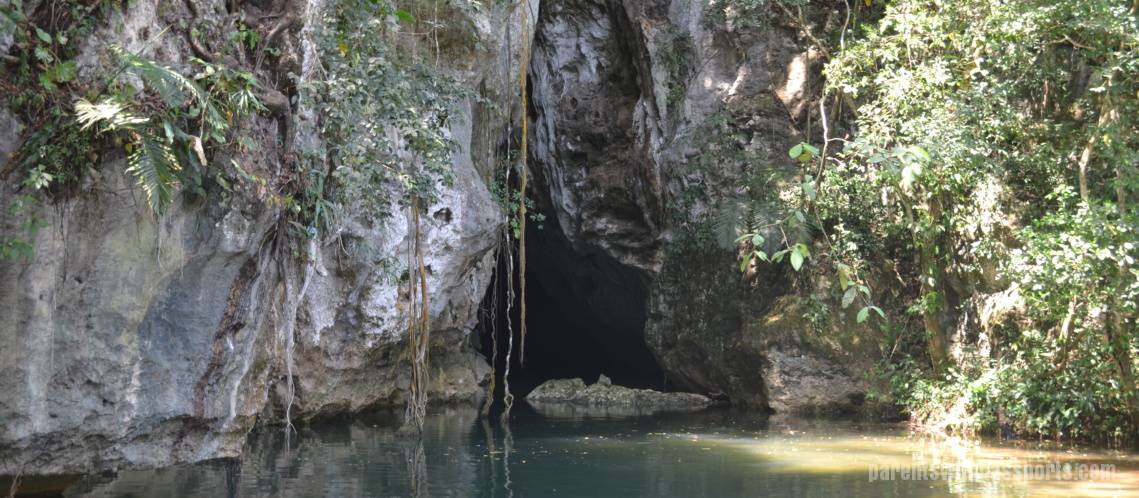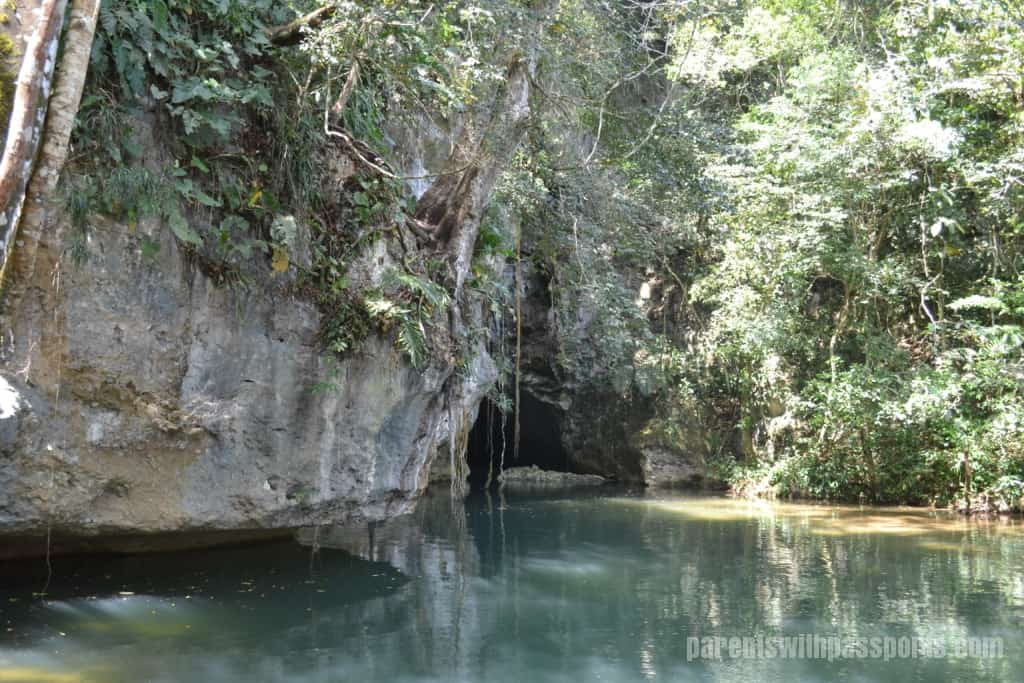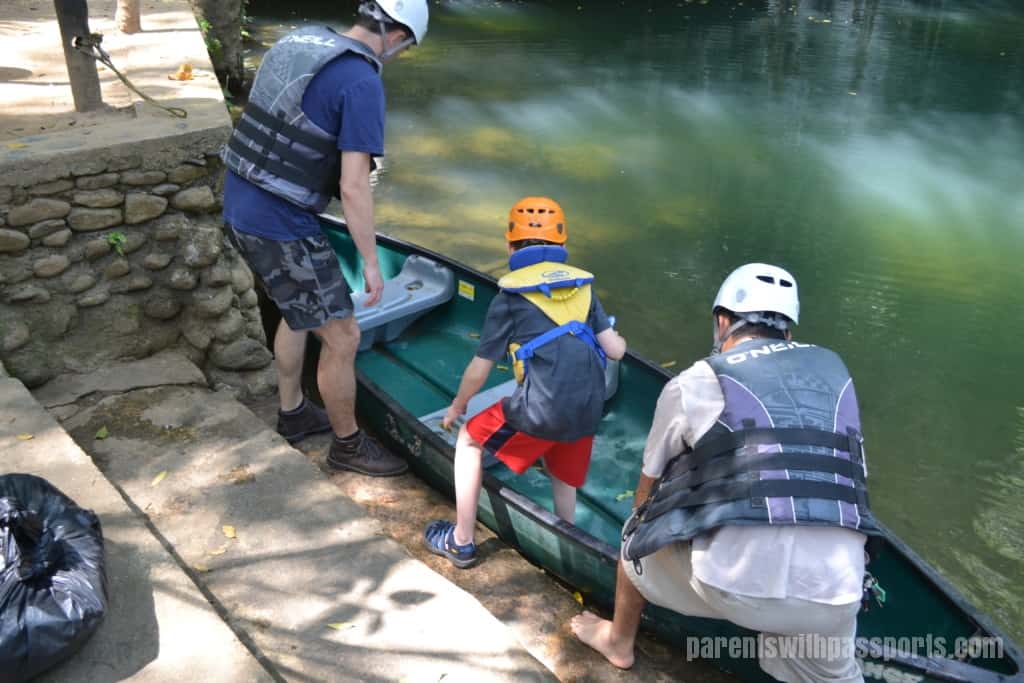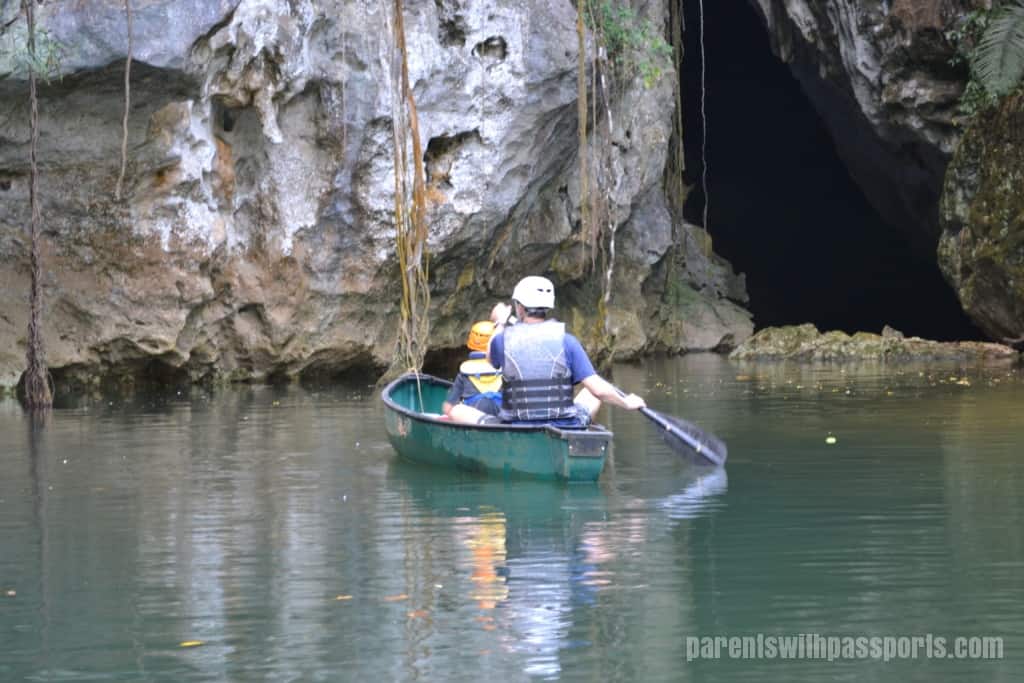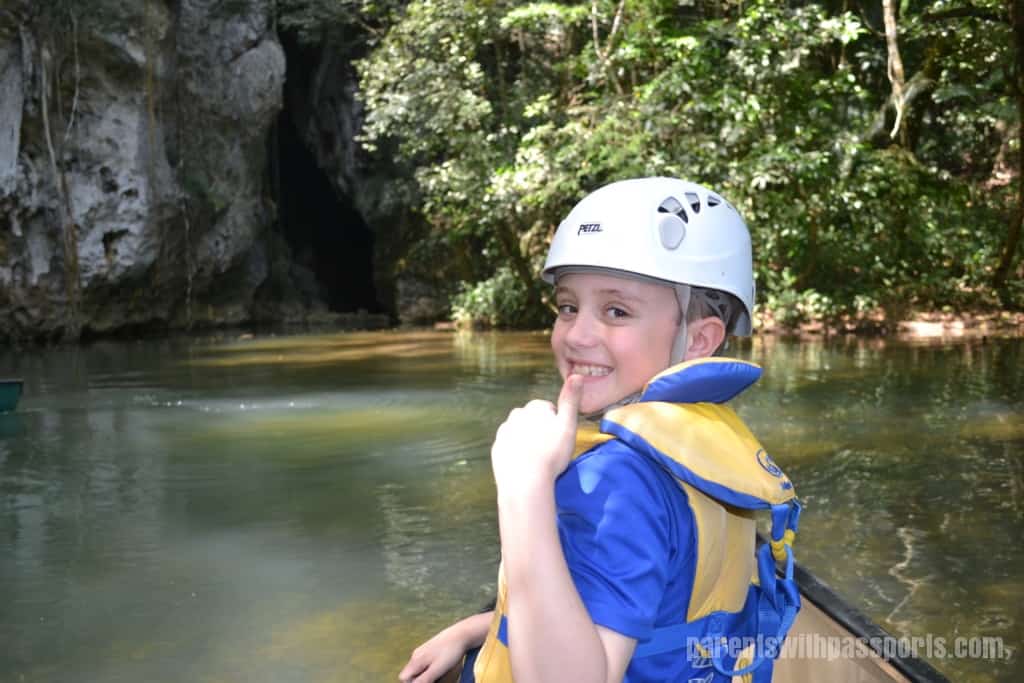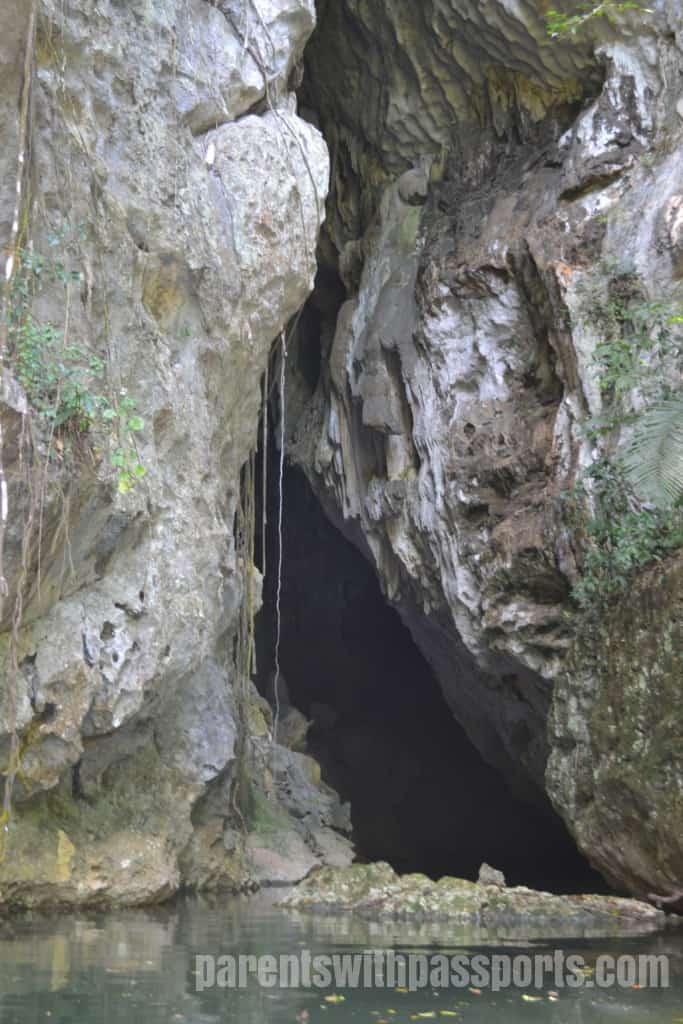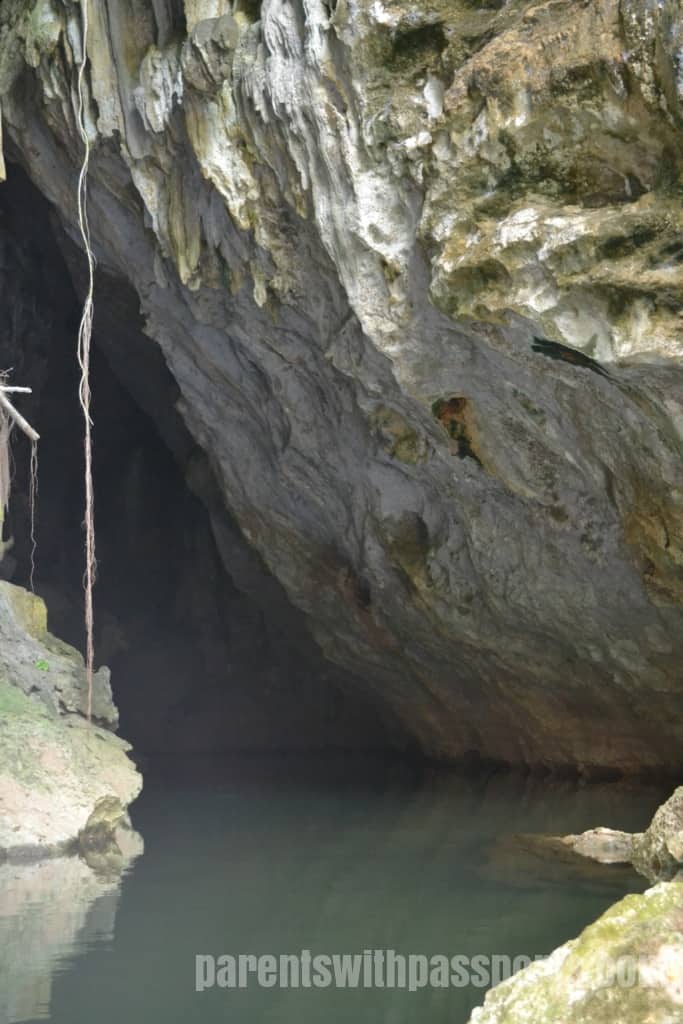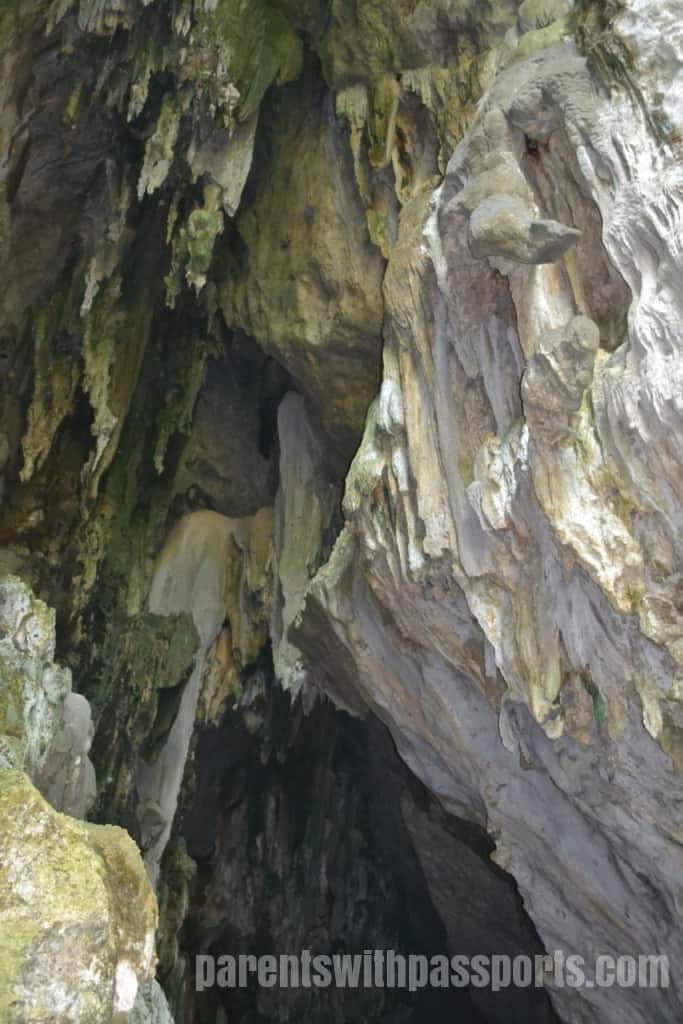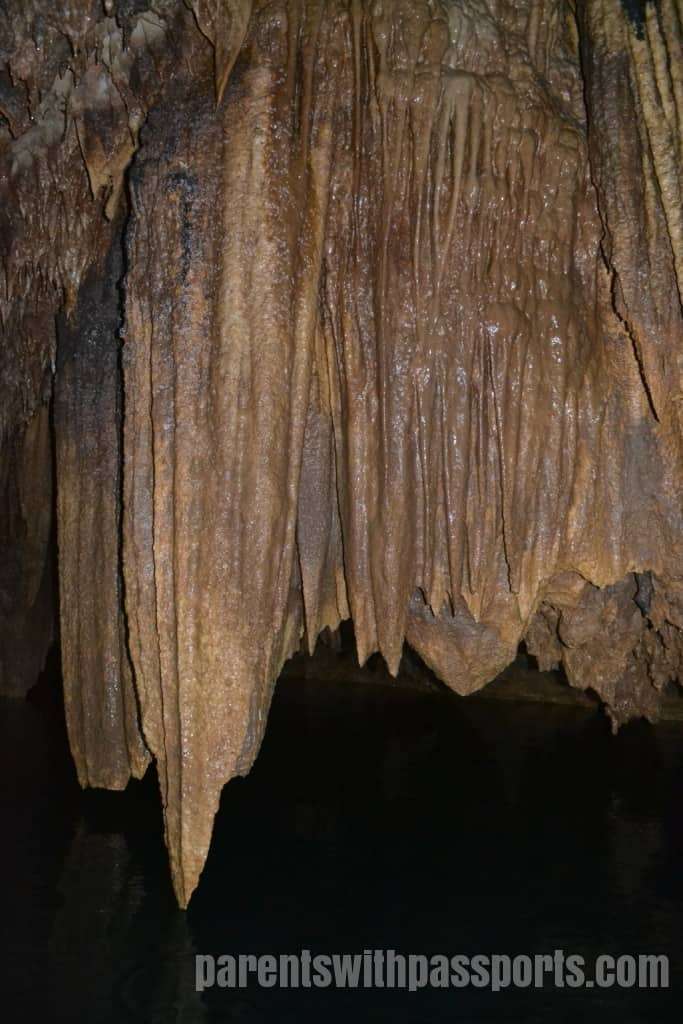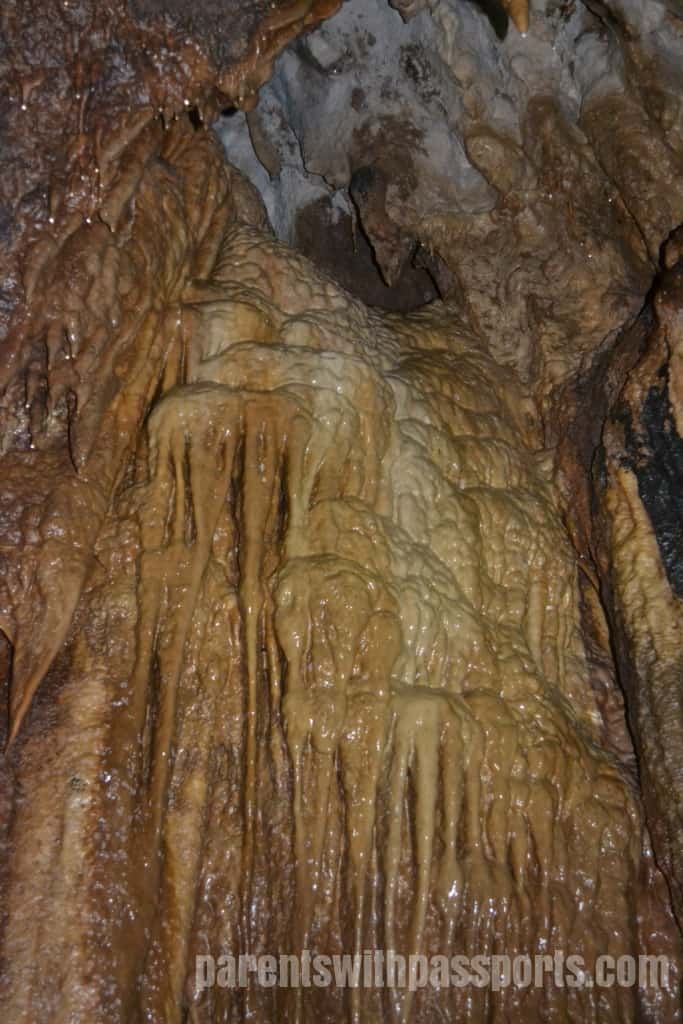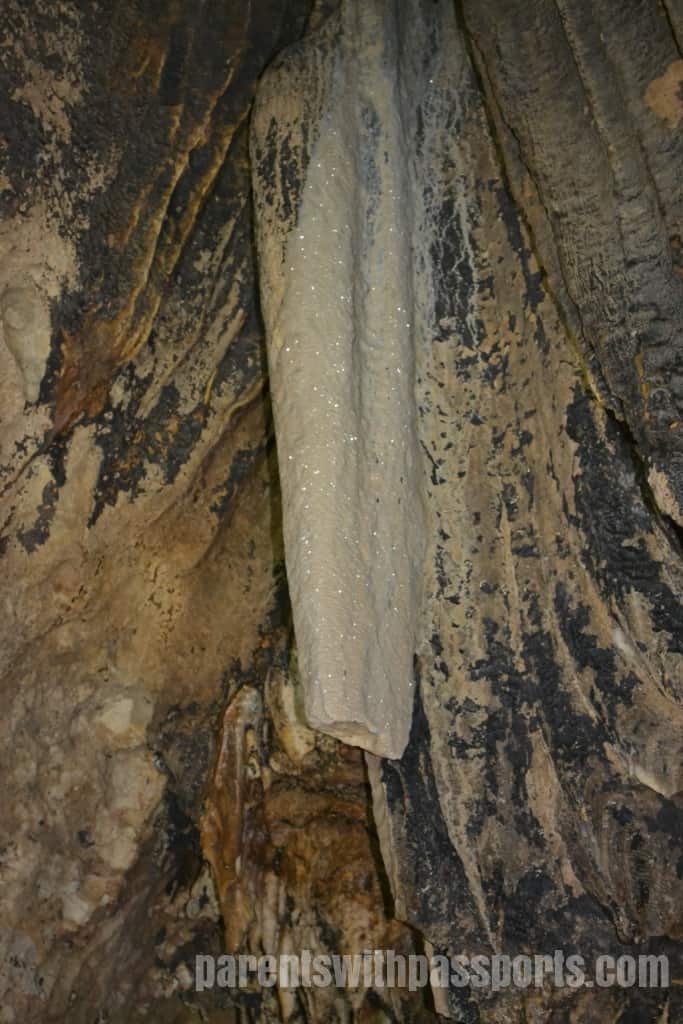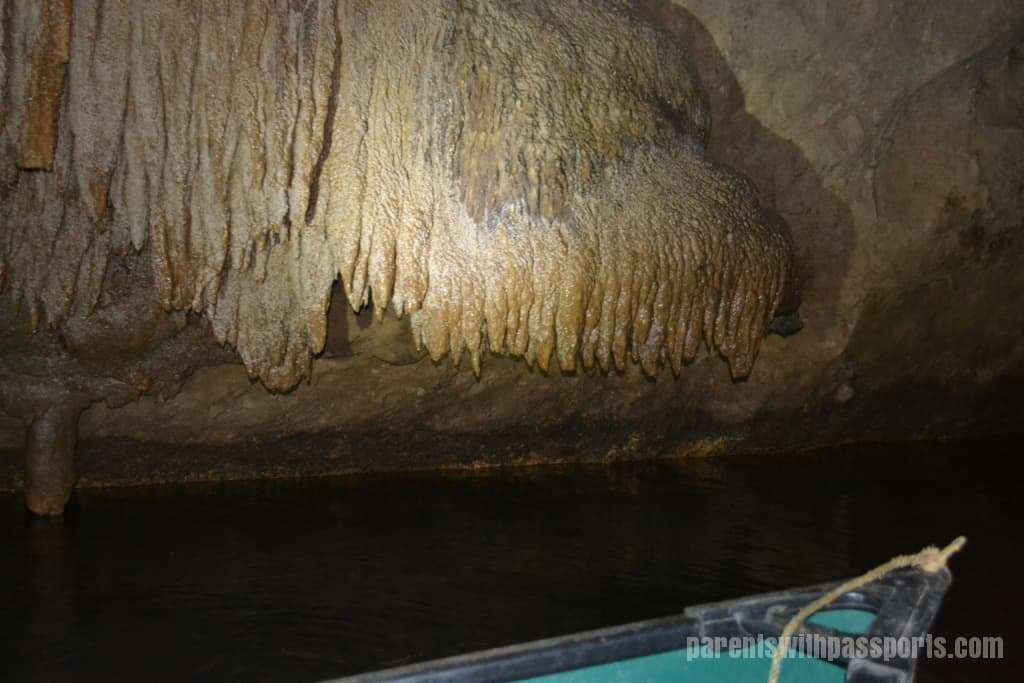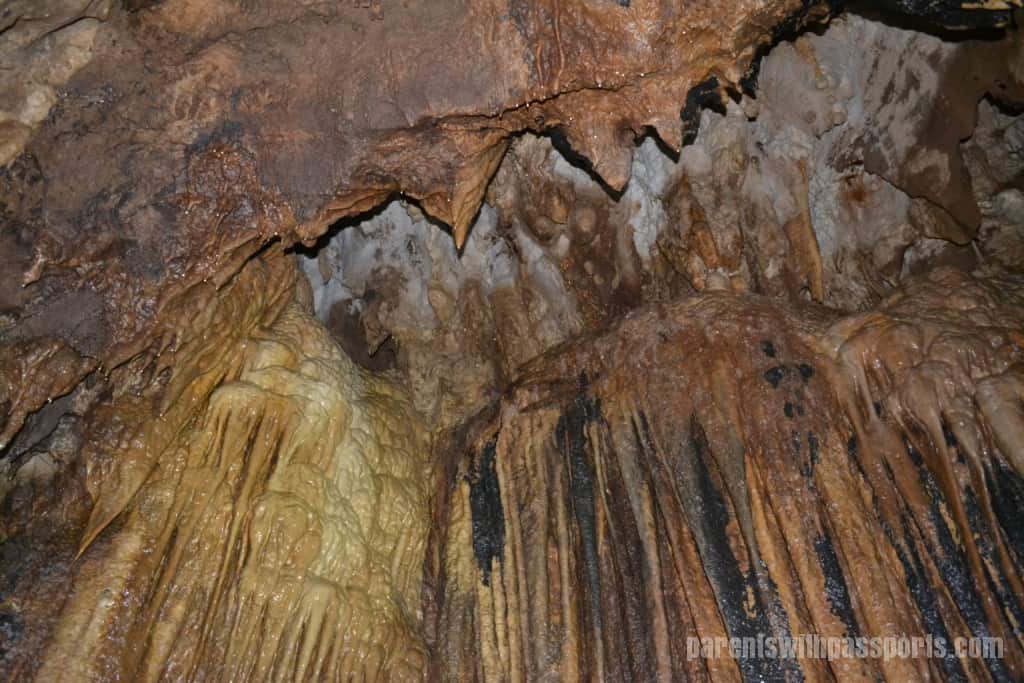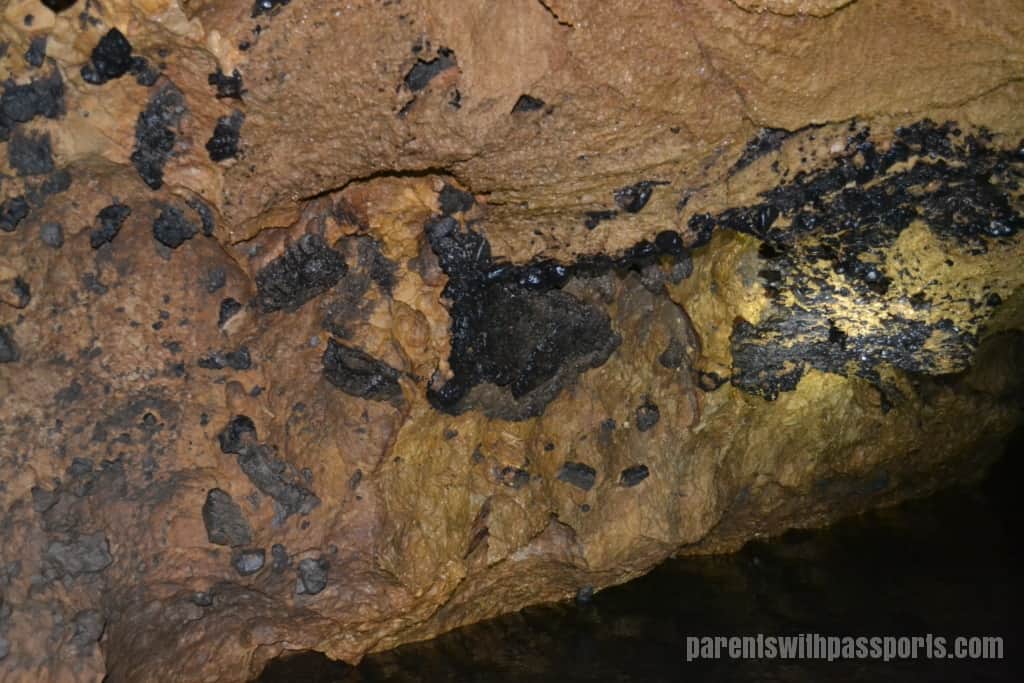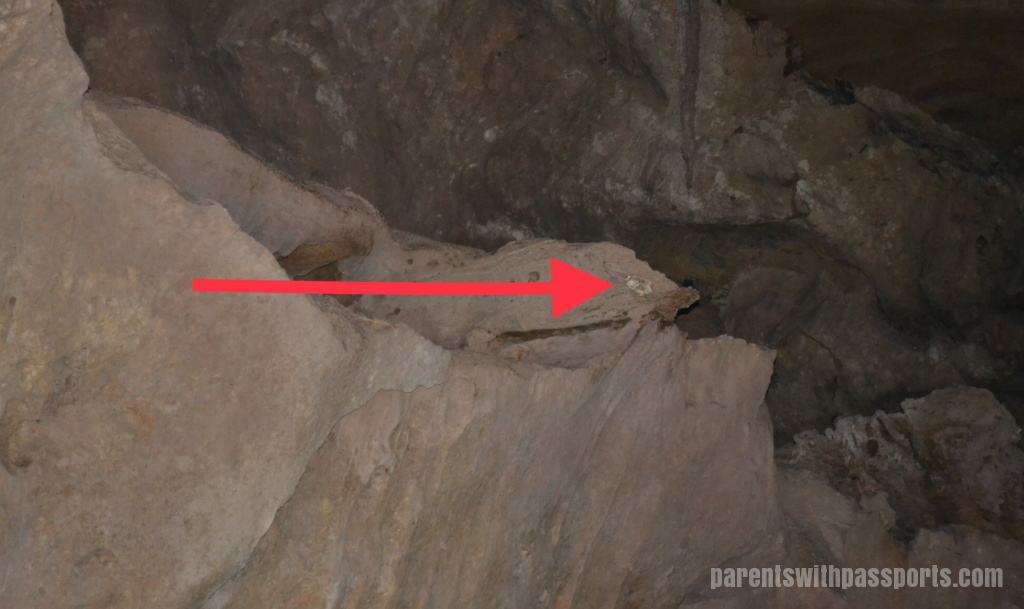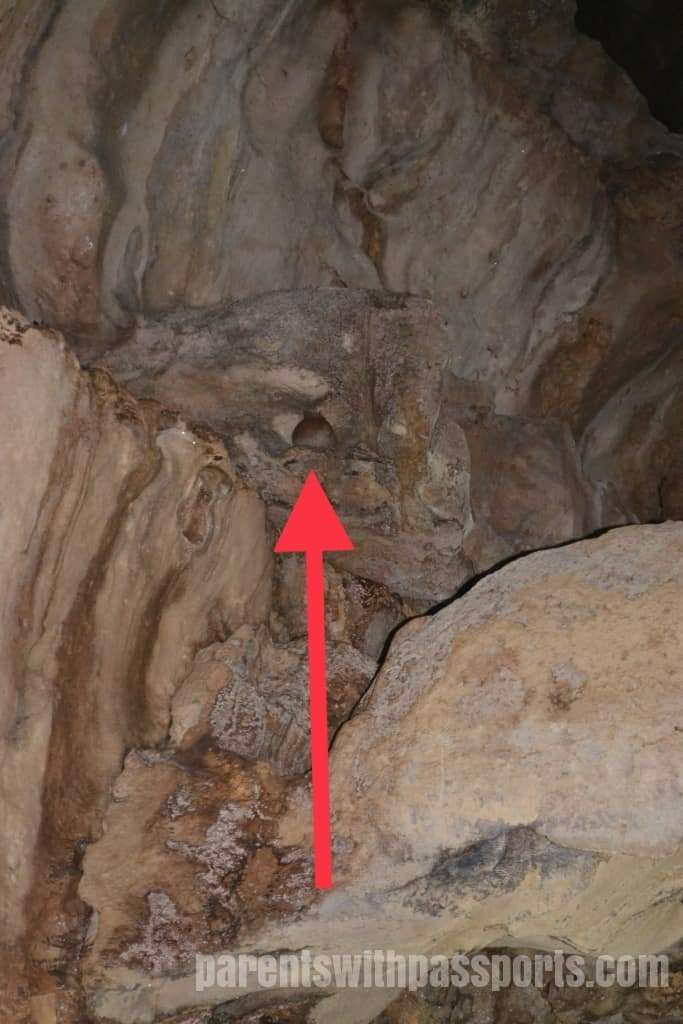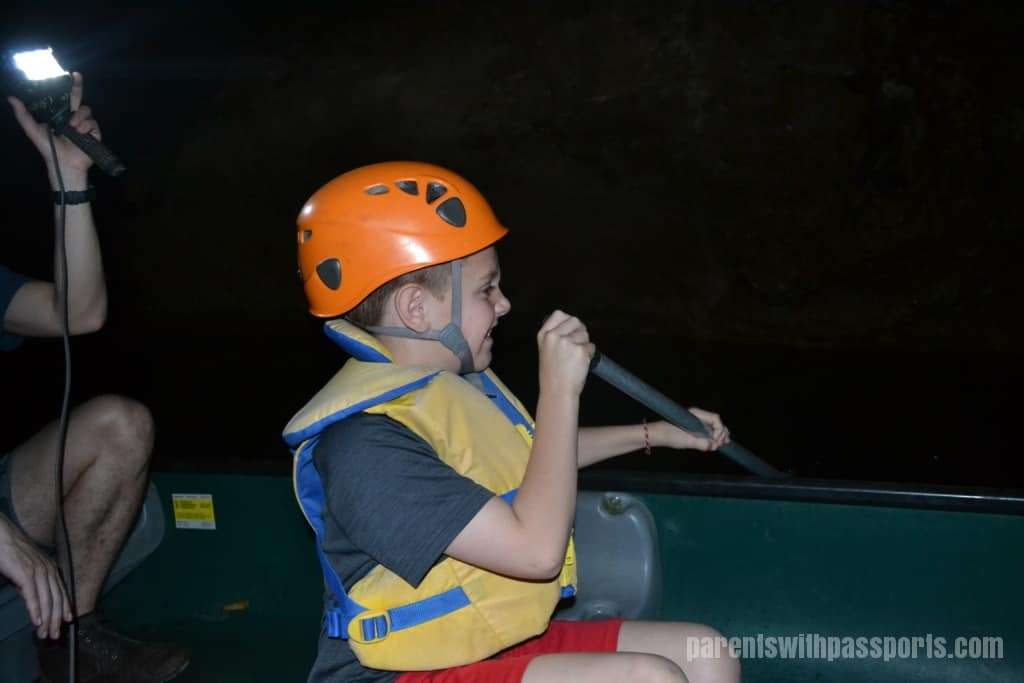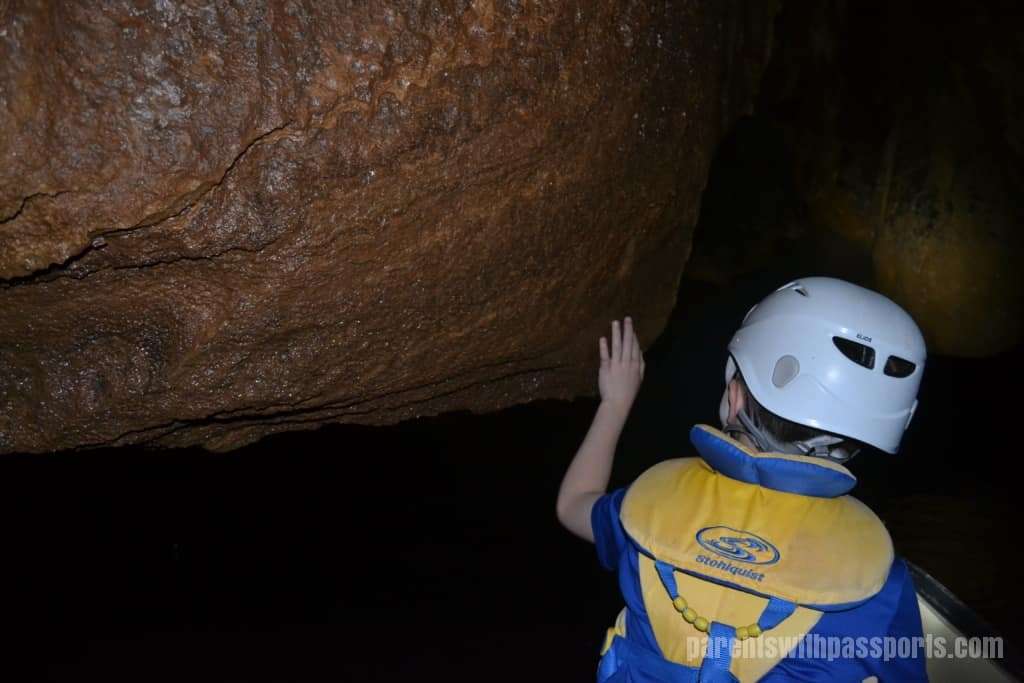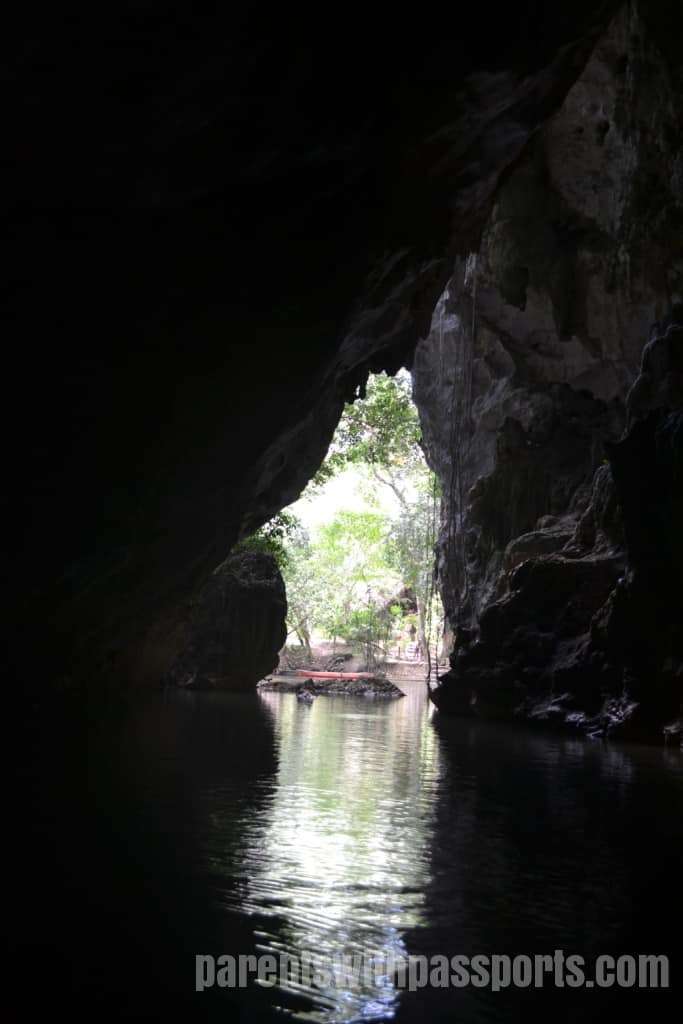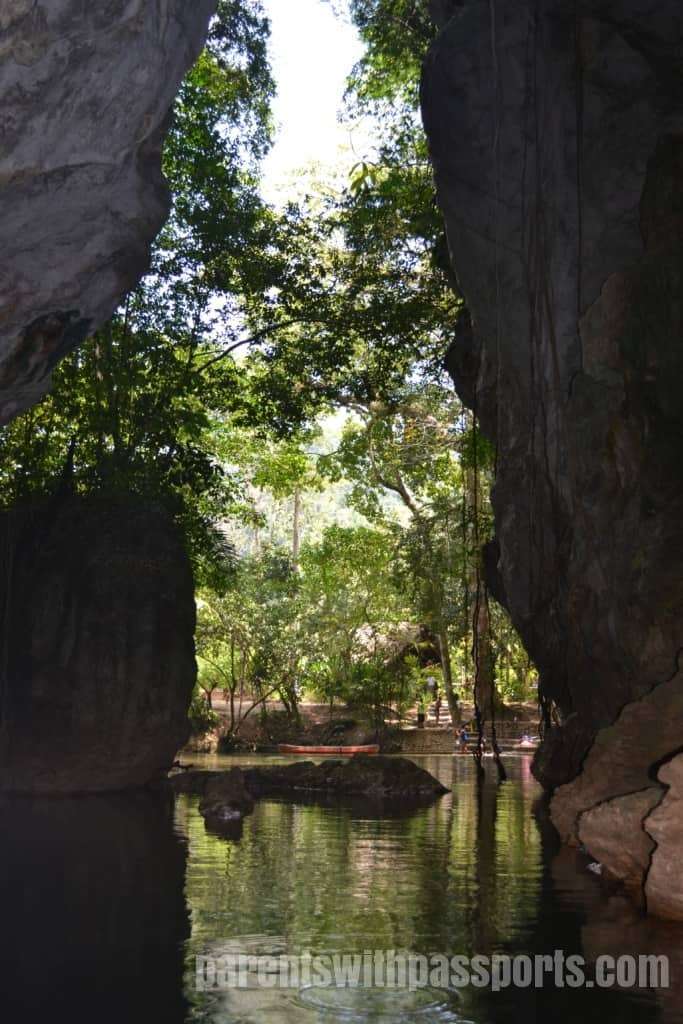While JB’s favorite activity in Belize was the Green Iguana Project, RB’s was Barton Creek Cave. Caves play an important role in Mayan history. The Maya believed caves were a portal to the underworld (known as Xibalba, or “Place of Fright”) and used them as a site of offerings, ceremonies, and sacrifices. Many believe that the collapse of the Maya in the 9th century AD was largely due to drought, and there is evidence that the ceremonial activities in the caves were a last-ditch effort to appease Chac, the Mayan rain god. Belize’s large cave system is fascinating to explore from a cultural, archaeological, and geological standpoint.
There are many opportunities to explore caves in Belize – some 300 caves and 150 miles of passageways have been explored and mapped. Many of these are open to the public and there is a wide range of ways to experience them. Actun Tunichil Muknal (ATM) is perhaps the most adventurous – you must swim, wade, crawl and climb your way into the different chambers of the cave before reaching the crystallized skeleton known as the Crystal Maiden. Other caves can be explored through the more laid-back option of cave tubing, where you float for miles through cave systems. Still others can be explored in canoes.
When I initially listed out the possible activities in Belize for RB, cave tubing was at the top of his list. He’s really interested in geology and the idea of floating gently through ancient caves on an inner tube sounded fantastic to him. But then there was the Great River Tubing Debacle of 2017 (read about it here) and it was clear that cave tubing was no longer an option. (No amount of assurance that rapids were not involved could change his mind.) Since the boys were too young for the more intense ATM tour, we settled on canoeing through Barton Creek Cave.
While the cave itself wasn’t high adventure, the drive there certainly was. Not adventure in the sense of driving down a harrowing, narrow road were one wrong move would send you plunging down into the river below (i.e. the road to Black Rock Lodge), but adventure in the sense that we had to take the bumpiest road in the history of roads to get there. Oh and we had to cross a river without a bridge. Adventure!
The road looked innocent enough – flat and straight and wide. But as soon as we turned on to it, it was clear that this was not going to be a smooth ride. I have never ridden on a bumpier road. Roque expertly navigated the road, using every inch of it to try to find the path of least resistance. We zigzagged back and forth from one side to the other, avoiding the largest of the crater-sized potholes. We were jostled about so much that my back and neck were sore for the rest of the day. As we shook side to side and up and down in the truck, the three adults were amazed that the boys read the entire way. I felt like I might be carsick just from riding. I have no idea how they kept their noses in their books the whole time. Kids.
 After a while the roads improved as we came upon a Mennonite community. It was amazing to see their houses and farms, all of which were built and run without the benefits of modern technology. There are several Mennonite communities across different areas of Belize. This one (Upper Barton Creek) is somewhat isolated (thanks to the difficulty of driving there) and is self-sustaining, but all of the Mennonite communities make great contributions to the economy of the country as a whole. Universally recognized as extremely smart and hard workers, they provide goods to all of Belize, from fresh produce to handmade furniture, and are also highly skilled in construction and roadwork. (Maybe they can work on paving the road to Barton Creek!) It was both odd and fascinating to be out in the jungle and pass horse-drawn carriages carrying men in overalls and straw hats and women in long black dresses and bonnets. It seemed so out of place yet they have been living in Belize (migrating from Canada to Mexico and then to Belize) for over 50 years and have clearly been welcomed here and have made a name and a home for themselves.
After a while the roads improved as we came upon a Mennonite community. It was amazing to see their houses and farms, all of which were built and run without the benefits of modern technology. There are several Mennonite communities across different areas of Belize. This one (Upper Barton Creek) is somewhat isolated (thanks to the difficulty of driving there) and is self-sustaining, but all of the Mennonite communities make great contributions to the economy of the country as a whole. Universally recognized as extremely smart and hard workers, they provide goods to all of Belize, from fresh produce to handmade furniture, and are also highly skilled in construction and roadwork. (Maybe they can work on paving the road to Barton Creek!) It was both odd and fascinating to be out in the jungle and pass horse-drawn carriages carrying men in overalls and straw hats and women in long black dresses and bonnets. It seemed so out of place yet they have been living in Belize (migrating from Canada to Mexico and then to Belize) for over 50 years and have clearly been welcomed here and have made a name and a home for themselves.
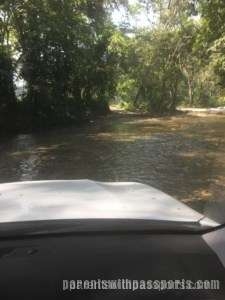 We had one more travel adventure before finally making it to the cave. After passing through the Mennonite community, we came upon a river crossing. But there was no bridge to the other side. Roque stopped and feigned confusion. “What should I do boys?” They looked up and down river, trying to decide how we would get across, wondering out loud if we needed to go back. Roque said “what do you think? Should I just drive across?” The boys laughed at his joke but when he shrugged his shoulders and said “let’s do it!” their laughter turned to surprised exclamations. Clearly this is how we were meant to cross – the water was only a few inches deep and we could see where the road picked up just across the way. But the boys thought it was the coolest thing in the world that they drove literally across a river, no bridge needed. (Roque did say that when it has been raining a lot and the water level is high, there is a much longer way that you can go around to get to the cave. Happily the water level was in our favor and we were able to take the short route with no problem.)
We had one more travel adventure before finally making it to the cave. After passing through the Mennonite community, we came upon a river crossing. But there was no bridge to the other side. Roque stopped and feigned confusion. “What should I do boys?” They looked up and down river, trying to decide how we would get across, wondering out loud if we needed to go back. Roque said “what do you think? Should I just drive across?” The boys laughed at his joke but when he shrugged his shoulders and said “let’s do it!” their laughter turned to surprised exclamations. Clearly this is how we were meant to cross – the water was only a few inches deep and we could see where the road picked up just across the way. But the boys thought it was the coolest thing in the world that they drove literally across a river, no bridge needed. (Roque did say that when it has been raining a lot and the water level is high, there is a much longer way that you can go around to get to the cave. Happily the water level was in our favor and we were able to take the short route with no problem.)
All this excitement and we hadn’t even made it to the cave yet! After about an hour’s journey, we finally pulled into the parking lot. On the far side of the parking lot is Mike’s Place, a large open-air thatched roof restaurant and tour company. You cannot go into the cave without a guide so if you opt to make the drive to Barton Creek Cave yourself, you will be required to hire a guide here.
But we had Belize’s best guide with us already. Roque carried all the gear (life jackets, helmets and spotlights) down to the waiting canoes. I have to admit that I expected either a bit of a hike through the jungle or a longish canoe ride to get to the mouth of the cave. But it was visible from the parking lot. We simply had to walk down the short path and hop in a canoe. I felt silly that I had worn hiking shoes and made the boys wear closed toe sandals. Flip flops would have been fine.
We had two canoes for the five of us – Blair paddled one canoe with JB manning the spotlight. Roque paddled the other with RB shining the way and me just along for the ride. Roque got Blair and JB all set up and ready to go and they paddled around while we got situated. The area at the mouth of the cave was beautiful and peaceful. Within a few minutes, we were ready to head into the cave.
The geological formations of the cave are stunning, right from the start. Stalactites, formed from dripping mineralized water, hung down like icicles along the top and side of the cave entrance. The stalactites at the cave entrance were primarily white, indicating that they were formed of almost pure calcite.
After we passed through the entrance of the cave, we rounded a bend and it immediately became cooler and darker. We switched the spotlights on and were amazed by the formations surrounding us. Stalactites of all colors, sizes, and forms surrounded us on the walls and ceilings. There were rich browns, spots of black, and shimmering crystal stalactites, each as awe-inspiring as the one before. Flashing the spotlight to catch the twinkle of the crystal from an overhead formation was a truly wondrous experience.
While other caves in Belize are more archaeologically significant, Barton Creek Cave is not without Mayan artifacts. About halfway through the tour, perched up high on a ledge is a human skull. There are shards of pottery throughout the cave and one perfectly preserved pot that also sits up high on a ledge. While these are the only two intact artifacts visible from the canoe, archaeologists have found ceremonial weapons, jewelry, pottery, and the remains of at least 28 humans. Through archaeological dating of the artifacts, it has been determined that the Mayans used the cave during the Early Classic Period (200 to 600 AD) and the Late Classic Period (600 to 900 AD).
Barton Creek Cave is about 5.5 miles deep but the tour only goes as far as the first mile. The ceiling is high and cathedral-like in most places but the further in you go, the harder the cave is to navigate. There were spots where we had to duck to fit under some low hanging stalactites and spots where we squeezed through narrow openings, brushing against the wet, rocky walls. JB loved taking a turn with the paddle, while RB loved being at the front of the canoe and seeing everything up close.
After ducking under some particularly low stalactites, we reached the furthest publicly navigable part of the cave. At this point, Roque had us turn off the lights and just sit and listen. In the pitch black, all our other senses were heightened. You could hear the drip drip dripping of water off the stalactites into the creek below. You could feel the cool air on your skin and smell the moisture of the cave. The kids marveled that they couldn’t even see their hands in front of their faces. It was an amazing experience. We sat in the darkness for a few moments, taking it all in.
On our way back, we passed a few other canoes and it occurred to me that we had been completely alone in the cave for our entire tour. We had been one of the first canoes in for the day and (much like Xunantunich the day before) had really been able to fully appreciate the site because of it. We were able to go at our own pace, paddle to any part of the cave when we wanted a closer view of something, and have an interactive tour with Roque. We feel lucky to have had such a personal experience.
Exiting the cave was beautiful as well. Still being surrounded by darkness but seeing the light peeking through the opening ahead was a unique perspective. With our spotlights off, the perception of the rocks changed as we got closer to the outside from dark and shadowy to bright and colorful.
The quiet peacefulness of the experience ended abruptly when we got close to the exit and were greeted by the playful screams of several rowdy groups of swimmers playing in the creek. It was Easter weekend and lots of Belizeans were out enjoying the holiday weekend with a picnic and a swim. Seeing the families having fun so much together was a neat contrast to the solemn experience inside the cave.
After exiting out canoes, we enjoyed a picnic lunch before heading on to our next adventure, Big Rock Falls.
